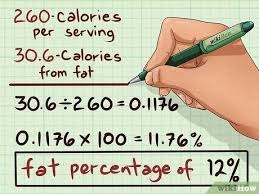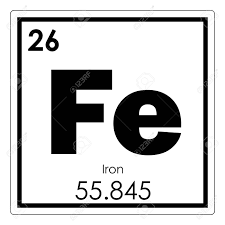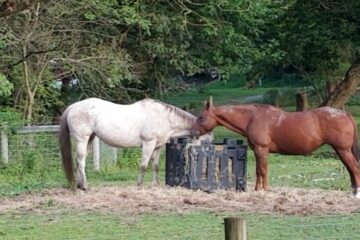The Impact of Carbohydrates on Horse Health

Like all mammals, horses require carbohydrates for a ready source of energy to get through their day. Just like humans too many carbs have consequences for horses but those consequences are far more debilitating to horses.
It is becoming more common knowledge that non structural carbohydrates (NSC) are worth watching in horses dealing with metabolic or genetic muscular conditions like EMS, PPID and PSSM. There are other consequences of high NSC in equine diets as we will see.
Oversimplification alert! Much of the background information was taken from a 312 page doctoral thesis using a research trial as a basis. My head hurts. I want to save you the pain so I’ve boiled it down into the notes I made so that I could consume and understand it.
If any PhDs are reading this please forgive me.
What Are NSC?
Non Structural Carbohydrates are the soft parts of plants. “Non Structural”. If you think of a plant cell as a building the “Structural Carbohydrates” would be the outer walls creating a container to hold the softer stuff inside.
Structural carbohydrates are hard to digest, if at all..
Non Structural Carbohydrates are soft and squishy making them highly soluble. This means that NSC travel well.
Why are NSC Harmful to Horses?
NSC are not inherently harmful to horses and they are an important part of meeting a horse’s energy requirements. The problem is too many NSC in too short an interval that is the killer.
Two “Factories” for Two Products
Carbs are digested in the stomach and small intestine while fiber is digested in the colon and cecum. The colon and cecum are part of a collection of components collectively known as “the hindgut”.
Each of these “factories” employ different “workers” to accomplish different jobs. Basically there are carb bugs that digest carbs and fiber bugs that digest fiber.
The carb bugs are the lucky ones because they are the first factory the food arrives at so if that food is loaded with carbs the carb bugs are happy and flourish. But like Lucy and Ethel working in the candy factory, if the production line becomes overwhelming then the excess carbs along with some of the carb bugs move downstream into the hindgut and that’s where the trouble starts.
The cecum is the most important part of the hindgut because this is where the fiber is digested in a fermentation process. The digestible fiber in forage is deposited into the cecum where it remains for about 30 hours and cooks. On a side note, this is why most horses that are getting full time forage don’t need blankets in winter, they are literally hay burning furnaces.
During this fermentation process the cecum liberates tons of beneficial volatile fatty acids to be efficiently used by the horse for weight maintenance and long term, slow release energy. This is why adding fat for weight gain is a poor choice but that’s for another chapter.
The bugs that support this process are delicate and exist in a very narrow range of pH. pH is the measure of the amount of acid or alkaline in an environment. The ideal pH of a horse’s hindgut is 6.5 to 7.
As carbs are digested one of the byproducts is lactic acid. When excess carbs and carb bugs end up in the hindgut the lactic acid will change the pH in the hindgut and the value will drop.
When the pH drops below 6, which isn’t much of a change, the fiber bugs will begin to die off and that’s when the trouble begins.
The Consequences of NSC Overload
One problem caused by the extermination of the fiber bugs is that without them fiber isn’t digested efficiently. If the fiber isn’t being digested properly then no VFA are liberated and the horse will begin to lose weight.
When this happens what have owners traditionally done? Right. Up the amount of concentrated feed offered. This increases the carb overload killing more bugs and causing more weight loss causing the owner to provide even more concentrated feeds.
This condition is called hindgut acidosis. If it progresses far enough it will become acute and can possibly kill a horse. Acidosis will certainly debilitate a horse. Even mild acidosis will cause behavioral changes.
This condition can cause laminitis in horses because as the fiber bugs die their exoskeletons create toxins that trigger laminitis. These bugs are always dying and being renewed but when there is a mass extinction the toxins spike and are beyond the ability of the horse’s system to mitigate the effects.
Gastric ulcers are caused by excessive acid. Stomach ulcers are created by different stressors causing a horse to limit the ingestion of forage and consequently a lack of saliva along with a lack of material in the stomach to buffer the acid.
Hindgut ulcers are caused by NSC overload creating a high acid environment where one should not be.
The last problem with high NSC are the consequences to metabolic horses with conditions like EMS and PPID as well as muscular conditions like PSSM. There is much awareness about these conditions now but little attention is paid to the consequences of high NSC to “healthy” horses.
What Can We Do as Owners?
The most important habit we can get into is to only feed products that have sugar and starch guaranteed as maximum levels on the feed tag guaranteed analysis.
When you see sugar and starch on the feed tag add them together and the sum will be total NSC concentration.
A good upper limit is 20%. You will see all kinds of crazy statements about keeping NSC below 11% but it really has to do with feed rate.
Research has shown us that 1 pound of NSC in a 1,000 pound horse is a “safe” limit. So a 20% NSC will allow a meal of 5 pounds, which is a lot of feed and if you’ve selected the correct feed you shouldn’t come close to five pounds per meal.
There are some excellent high fat, high calorie feed formulations these days with NSC well below 20%.
If you have an older horse or a horse with advanced PPID you need to get calories into them but you don’t want to overload them so more frequent meals are the answer.
All horses are individuals and when it comes to metabolic disorders there are many moving parts so the one pound per meal is a “guideline”.
Don’t Forget About Forage
A great way to avoid gastric distress is to ensure your horse has access to sufficient high quality forage as the primary source of calories. My idea of perfection is a horse maintaining weight on forage and receiving only minimal nutritional supplementation.
It is also important to keep in mind that forage is a big source of NSC in a horse’s diet. Most grass hay averages around 12% but can be as high as 20%.
Most forage is spread out over a longer time interval than a three pound meal of grain. Some horses will benefit from slow feed systems.


